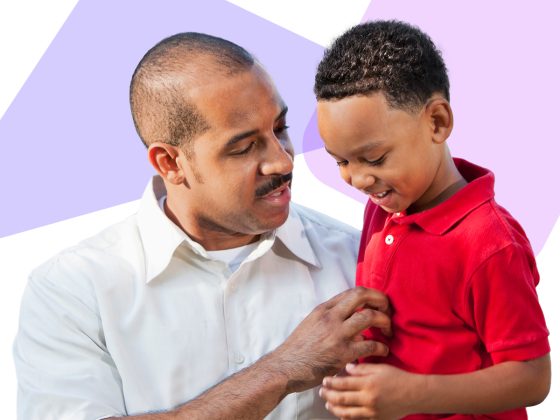
Learning About Racial Literacy
The resources in this initiative can support you in building racial literacy in all children, and to also build children's sense of self and self-worth.
The resources in this initiative can support you in building racial literacy in all children. And there are even two new friends on Sesame Street here to help.
You hold great power to help children better understand this complicated, flawed, sometimes unfair world. Your words matter, and talking honestly and directly about race and diversity is the beginning of racial literacy. Even if children don’t understand the nuances of the words, being open to learning new words and understanding ideas from others’ perspectives is always helpful.
Racial literacy is:
- the knowledge, skills, and awareness needed to talk thoughtfully about race and racism; this naturally includes having a rich vocabulary including terms such as race, racism, prejudice, ally, upstander, and so on.
- the ability to identify someone being treated unfairly because of their identity
- having strategies to counter or cope with racism
Because building racial literacy also means building children’s sense of self and self-worth, it’s best for all families, regardless of skin color, to begin early. Building racial literacy is a process that will look different in each family, but it’s essential to thriving within the world as it is… while simultaneously striving to create an antiracist world together.
Here are some racial literacy strategies to use with preschoolers:
- Talk about skin color (“We all have something called melanin in our bodies. People who have more melanin have darker skin than people with less melanin.”).
- Acknowledge unfair behavior (“When people treat others unfairly because of their skin color, that’s hurtful.”).
- Encourage and celebrate children’s optimism for a better society. (“Everyone should be proud of who they are, inside and out. The way other people treat us doesn’t change who we are.”)
- Ask questions. When children make observations about race, ask “Why do you think that?”
You can also teach “Breathe, Feel, Share” when something stressful related to race happens (for instance, when a child is excluded or teased):
- Breathe: Take three deep belly breaths.
- Feel: Notice how you are feeling, and think of words you might use to respond (for instance, “I don’t like that,” “That’s wrong,” or “That hurts my feelings.”).
- Share: Tell a grown-up what happened.
ADVISORS
- Danielle Adamson, Senior Director of Programs, National Black Child Development Institute
- Kristy Arnold, PhD, Executive Director, LIFT-DC
- Kenneth Braswell, CEO, Fathers Incorporated
- Lauren Caldwell, Ph.D., JD, Director, Children, Youth and Families Office, American Psychological Association
- Mariana Chilton, Ph.D., MPH, professor, Dornsife School of Public Health, Drexel University Director of the Center for Hunger-Free Communities
- Terry Cross, founding executive director, National Indian Child Welfare Association
- Barbara Duffield, Executive Director, SchoolHouse Connection
- Chandra Ghosh Ippen, Ph.D., Associate Director of the Child Trauma Research Program at UCSF, Director of Dissemination and Implementation for Child-Parent Psychotherapy
- Amanda Guarino, Policy Director, First Five Years Fund
- Lina Guzman, Ph.D., Vice President of Strategic Initiatives and Strategy; Director, Child Trends’ Hispanic Institute
- Sarah Kastelic, Ph.D., Executive Director, National Indian Child Welfare Association
- Kathleen King, Interim Policy Director, Children’s Defense Fund
- Hilary O. Shelton, Senior Vice President for Advocacy and Policy, NAACP (Director, Washington Bureau)
- Howard Stevenson, Ph.D., Professor of Urban Education, University of Pennsylvania; Executive Director, Racial Empowerment Collaborative
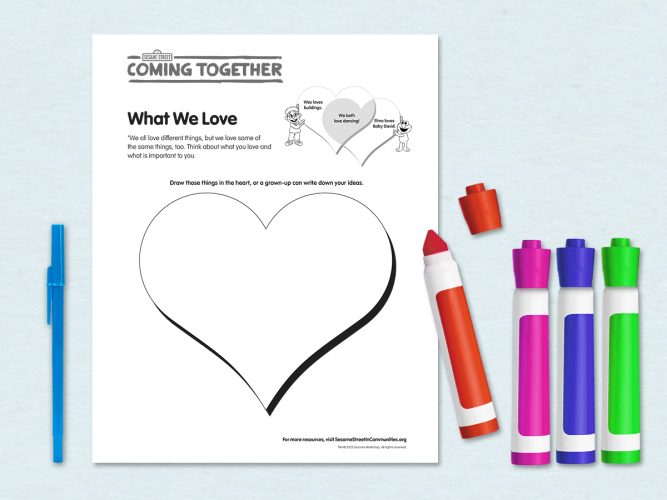
What We Love
A printable about how we are different and what important things we share.
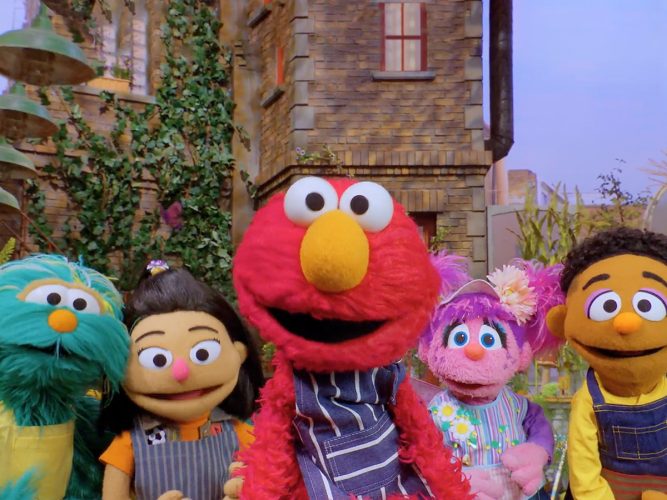
Community Song
A video about community.
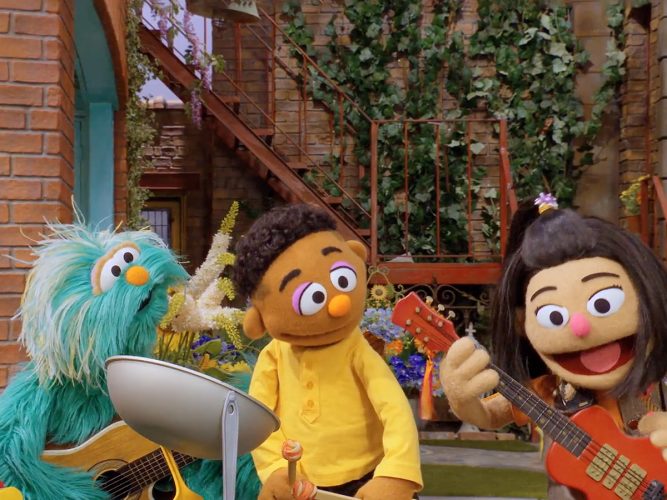
Musical Show & Share
A video about coming together to create something beautiful.
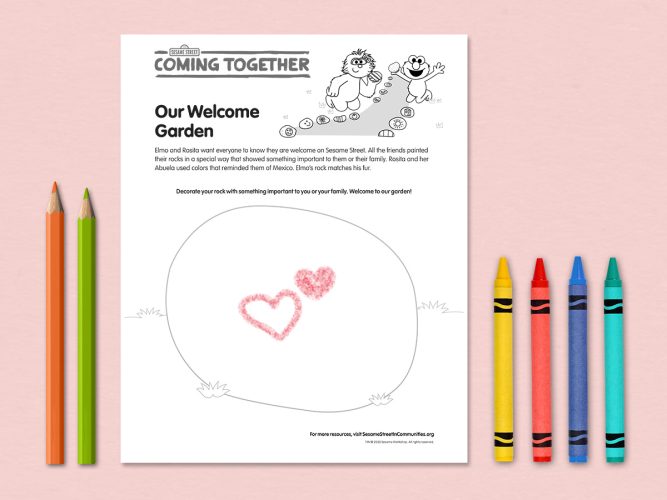
Our Welcome Garden
A printable page about a community rock garden.
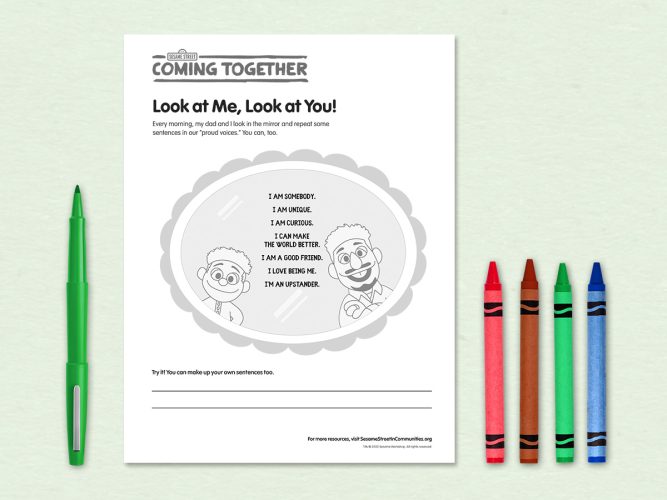
Look at Me, Look at You!
A printable page with parent-child affirmations.
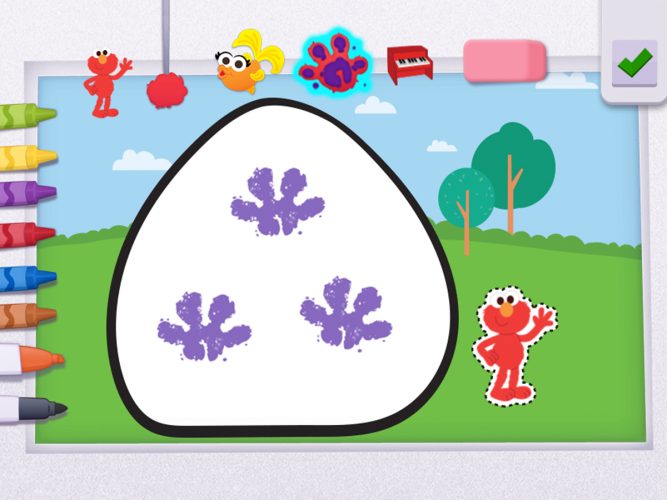
Welcome to Our Garden
An interactive game in which children add rocks to the Sesame Street community garden.
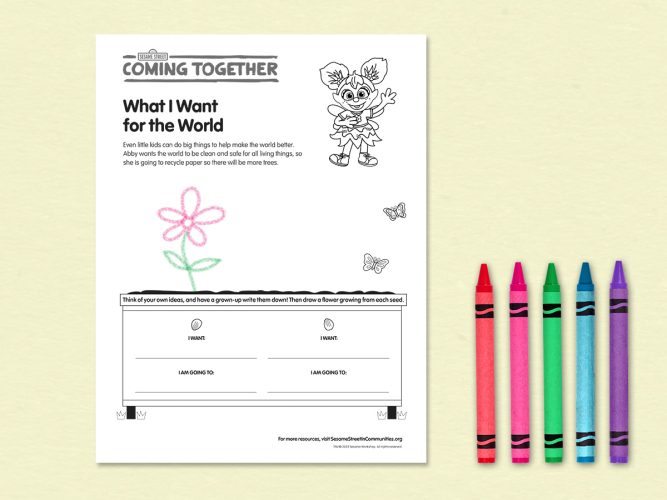
What I Want for the World
A printable page about making a difference in the world.
